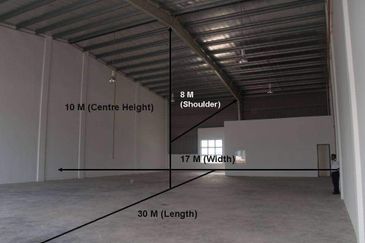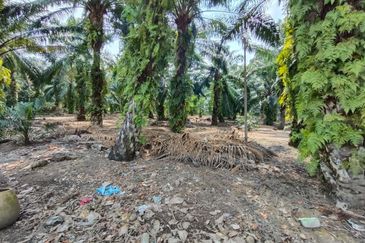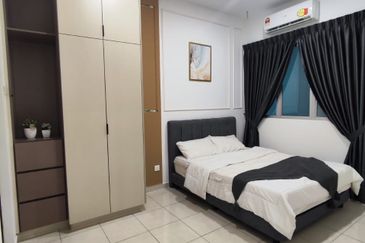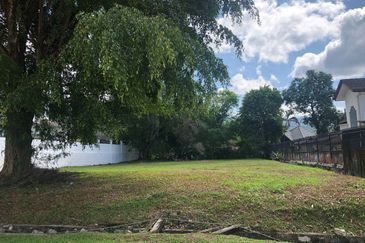Unbeknownst to many, the once conspicuously positioned seven-block Pekeliling Flats on Jalan Pekeliling, Kuala Lumpur was the first development in Malaysia built with the pre-fabricated system.
Built between 1964 and 1967, the Pekeliling Flats were completely demolished by November 2015 to make way for new residential projects and a monorail station.
“The Industrialised Building System, or simply known as IBS, began in the early 1960’s when the then-Housing and Local Government Ministry visited several European countries and evaluated their housing development programmes.
“The government then started the first IBS project, which was the Pekeliling Flats, aimed to speed up delivery time in building affordable and quality houses,” Master Builders Association Malaysia (MBAM) president Foo Chek Lee tells TheEdgeProperty.com. The 17-storey low-cost flats, housing a total of 3,000 units and 40 shoplots, stood on about 22.7 acres of land.
Still underutilised after 53 years
However, the forward-thinking pioneering move did not lead to a wider use of the IBS as expected. “The adoption [of IBS] in Malaysia is still very low, even after five decades since its introduction,” Foo says.

According to data from the Implementation Coordination Unit of the Prime Minister’s Office, as at the first-half of 2016, only 24% of public projects valued at RM10 million and above have achieved an IBS content score of 70 (out of 100) while the Construction Industry Development Board reports that only 14% of private projects have achieved an IBS content score of 50.
Foo attributes the poor adoption to lack of awareness and education on IBS among industry players as well as the public. What more, there are certain misconceptions about IBS among the public. For instance, IBS is associated with weak or low-quality buildings and limited designs. “Some also perceive the IBS technology as expensive, of lower quality and too standardised compared with conventional systems. These are only myths,” he notes.
 Besides, many in the building industry believe that there is a lack of fiscal or non-fiscal incentives to build using IBS. Citing an example, Foo says the exemption of the construction levy for housing developers that utilise IBS components actually exceeds 70%. “There are many benefits for all stakeholders that adopt IBS, including for the developer, builder and buyer, that should be widely promoted.
Besides, many in the building industry believe that there is a lack of fiscal or non-fiscal incentives to build using IBS. Citing an example, Foo says the exemption of the construction levy for housing developers that utilise IBS components actually exceeds 70%. “There are many benefits for all stakeholders that adopt IBS, including for the developer, builder and buyer, that should be widely promoted.
“While people are worried about the quality of IBS-built projects, do you know that Petronas Twin Towers was built using IBS?” he asks. So now we know what the low-cost Pekeliling Flats and the iconic Petronas Twin Towers have in common.
Greater awareness needed
Foo suggests more awareness programmes to be implemented. “Such programmes need to be continuously carried out to educate the public on the benefits of IBS projects,” he says.
“Perhaps there is a need to push for public-private partnerships or joint ventures between local and international IBS contractors. The government should also come up with more incentives to encourage the use of IBS. This includes offering flexible financing and tax reductions to manufacturers and contractors.”
Besides that, he believes the 1Malaysia People’s Housing Programme can be a good platform for utilising IBS in order to prove its quality and efficiency in mass housing developments.
“The Construction Industry Transformation Programme (CITP) is set to bring Malaysia’s construction industry to the next level. One way to help achieve this goal is for the industry to strongly adopt IBS of construction,” Foo says.
Spearheaded by the Ministry of Works, CITP is Malaysia’s national agenda to transform the construction industry from 2016 to 2020 with four strategic thrusts – quality, safety and professionalism; environmental sustainability; productivity; and internationalisation.
“With the greater adoption of IBS, the industry can be more cost-effective, construction can be speeded up, foreign labour issues can be reduced and the overall performance of the construction industry can be raised in terms of quality, occupational safety and health as well as waste reduction.”

This story first appeared in TheEdgeProperty.com pullout on May 19, 2017. Download TheEdgeProperty.com pullout here for free.
TOP PICKS BY EDGEPROP
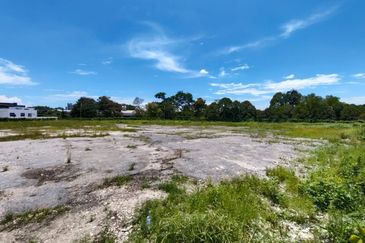
Taman Perindustrian Kip
Kuala Lumpur, Kuala Lumpur
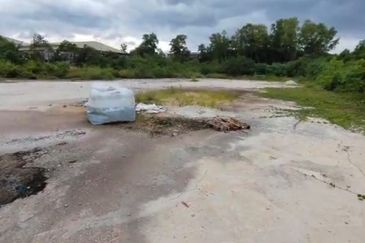
Kawasan Perindustrian Nilai 3
Nilai, Negeri Sembilan

Sime Uep Industrial Park
Subang Jaya, Selangor

Telok Panglima Garang Industrial Zone
Telok Panglima Garang, Selangor

Bukit Jalil Golf & Country Resort
Bukit Jalil, Kuala Lumpur

Kampung Baru Seri Kembangan
Seri Kembangan, Selangor

Taman Tasik Semenyih (Lake Residence)
Semenyih, Selangor



